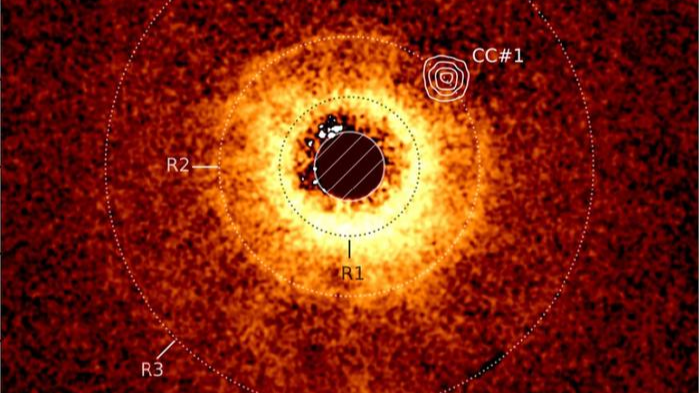The James Webb Space Telescope (JWST) has captured its first direct image of a planet in a remote solar system, and it’s lighter than any seen before.
The planet, named TWA 7b, is a gas giant with a size comparable to Saturn’s. Orbiting a star just over 6 million years old, the planet is still glowing hot from its formation.
The planet is the first observation of hypothesized yet previously unseen “shepherd” planets, which clear gaps of material found inside planetary rings. The researchers behind the discovery published their findings June 25 in the journal Nature.
“It tells us that indeed, planets can form gaps in disks (which was theorised, but not observed) and trojan-like structures can indeed be present in exoplanetary systems,” lead study author Anne-Marie Lagrange, an astronomer and research director at the French National Center for Scientific Research (CNRS) in Paris, told Live Science.
“It is the first time that such a light planet is imaged, ten times lighter than the lightest [previously known] planet,” she said. “This is thanks to the extreme sensitivity of JWST in the thermal domain.”
Astronomers study exoplanets because they help them to understand how planetary systems, such as our own, form. Yet while thousands have been seen indirectly — through the dimming of host stars as they pass in front of them or the wobble the planets’ gravitational tugs give them — the light bouncing off exoplanets is usually drowned out by the light from the star, making them effectively invisible.
Related: ‘Eyeball’ planet spied by James Webb telescope might be habitable
To peer through this glare, JWST uses a coronagraph attached to its Mid-Infrared Instrument (MIRI); this device blocks out a star’s light and makes it easier to spot objects orbiting around it. To further boost the effectiveness of this search, astronomers select young stars whose planetary disks are pole-on to the telescope, enabling them to “look down” over star systems whose satellites are still glowing hot from their formation.
The system containing TWA 7b, called TWA 7, is 110 light-years from Earth and contains three concentric rings of rocky debris and dust, one of which was narrow and flanked by two empty bands of space. Within the heart of this narrow ring, the scientists found a hole containing a source of infrared-radiation.
Follow-up simulations suggested that this radiation source is a planet roughly 30% the size of Jupiter that’s orbiting its star at 52 times the distance that Earth orbits the sun. Its presence in a gap inside the planetary ring is also intriguing; while observations of holes in the discs surrounding stars have been made before in other systems, this is the first clear detection of the shepherd planets believed to create them.
To further investigate the new system and others like it, Lagrange said that she and her colleagues will obtain “more data to study TWA7 b atmosphere, to search for other light, cold young planets in imaging” and “to search for cold old massive planets.”
